I get it now. For years, I’ve bemoaned the notion that, for some deep-seeded reason known only to those crusty souls who worship at the altar of the Atlantic salmon, their chosen fish sits atop the throne of the fly-fishing monarchy.
First, I’m a landlocked Idahoan, for whom the luster has worn off of my state’s meager steelhead fishing opportunities. At home, chasing fish returning from the ocean has become depressing. Every year, the numbers seem to dwindle. Now, the decision to stay off the water is based almost solely on a crisis of conscience. Do I dare fish for anadromous trout that are hardly viable now and likely won’t be with us, at least in any reasonable numbers, 20 years from now?
Second, having worked in conservation for nearly 20 years, that same mindset, for me, anyway, existed when it came to Atlantic salmon. The far-flung Salmo salar — the leaper and tailwalker that connects the North Atlantic from Maine, Newfoundland and Labrador to continental Europe, Scandinavia and Russia — has fallen on hard times. The culprits are all too familiar. Migration barriers. Overfishing. Fish farming. And, of course, the all-encompassing impacts of the global climate crisis.
I couldn’t shake the notion that the days of the great salmon rivers were a thing of the past, with perhaps a few rare exceptions that I imagined required five-figure price tags and navigating decade-long waiting lists just to fish for a few days.
And then, this past summer, I fished the Flowers.
Finding religion
More Like This
The Flowers River of Labrador is Canada’s farthest-north “scheduled” Atlantic salmon river, meaning its salmon population is carefully monitored by provincial fisheries managers, and angling is closely managed, too. Every summer, from July into the middle of September, anglers book passage to Flowers River Lodge or its nearby outpost camps in order to cast flies over what amounts to a rather healthy population of fish returning from the cold North Atlantic. And, for four magical days last August, I was among that crowd of fortunate anglers.
I was skeptical about the fishing. Even after hearing positive reports from the anglers coming out of the wild as we prepared to take their places, I stubbornly clung to my perception: Atlantic salmon are a dwindling species, and I can’t imagine that the fishing is going to be very good. This is an exercise in futility.
Only when I boarded the float plane for the flight from Goose Bay to the river did I even let the notion of potential success creep in.
Well, maybe I’ll get lucky and catch just one. It’ll be something to tell the grandkids.
But, on my first afternoon on the river, not even 30 minutes into the fishing, as I stared into the bottom of a rubber mesh net at 12 pounds of sheer, chrome power with a bristly Bomber fly stuck in the corner of its jaw, something inexplicable happened. In a split second, I converted from agnostic fly fishing skeptic to an evangelical Atlantic salmon angler.

“Damn,” I told Chris Duffet, my guide for the afternoon, “the grandkids are gonna love this story.”
On most Atlantic salmon rivers, the angling is fairly structured. Every day, you and your angling partner are assigned a beat to fish. On the Flowers, things are no different — and for the first half-day (we didn’t get to the lodge until later in the day due to weather), Chris and I were positioned on Max’s Pool, about a 10-minute ride up the river from the lodge.
The pre-fishing lecture was very familiar. Cast, mend and then let it swing. Every couple of casts, take two or three steps downstream and repeat. Chris could have guided every steelhead angler I know.
But there were differences. First, the Bomber is a dry fly, and for the first half of the drift at Max’s Pool, Chris had me fish it like a dry fly. And, an important note: all flies used to fish for Atlantic salmon in Canada must be unweighted. That’s part of the fisheries management plan, and anglers are very good at self-policing.
“You need a good drift,” Chris said through a heavy Newfoundland accent, as I cast the Bomber upstream. “Just like trout fishing.”
Then, the mend. And then, because the fly is dry and lathered in floatant, comes the skate. And the Bomber, a bristly pattern crafted with stacked deer hair and tied in lots of different colors, is a skating fool. It creates an obnoxious wake that, more than anything, helps anglers like me see where the fly is.
And, as I would soon learn, that wake helps the fish see where the fly is, too.

But, as we cast from shallow water over a deep run where, Chris assured me, salmon were stacked up, my skepticism worked against me. I wasn’t prepared when a six-pound grilse (an Atlantic salmon that’s returning to spawn after only one year at sea) nailed the Bomber on the drift. For a split second, I had the fish on the line — and when it cartwheeled out of the water and landed with an audible slap, something in my brain zapped. It was as if, with the flicker of a seldom-used fluorescent tube light, a long-dormant synapse in my nervous system completed its first-ever circuit. I was awakened. And then the fish was gone.
“It’s OK,” Chris said. “That was a little one, anyway. There’s more. Just keep at it.”
“That thing hit it on the drift,” I said kind of matter-of-factly. “Like … it didn’t wait for the swing. It just grabbed it.”
Chris nodded.
“Yeah,” he said. “Grilse will do that. So will bigger fish, sometimes. You never really know what’s going to set them off. Nobody knows. It’s one of fishing’s great mysteries.”
I cast again a couple of times with nothing to show for it. Dutifully, I took two steps downstream. I threw a couple of false casts to shed the Bomber of any water, and dropped it over the run. It floated high and proud — it did its job. Now, I just needed to do mine.
But I was busy steeping in my newfound reality. This wasn’t an exercise in futility. There were still Atlantic salmon that'll hit flies left in this world. And they were stacked up at my feet, apparently. My faith, battered by the flagging runs of Idaho’s hatchery-manufactured steelhead, was back. Everything looked brighter and more crisp. The sun’s afternoon rays on my face lifted my spirits. Greens were greener. Blues were bluer.
I found religion. Praise the salmon. I was born again.
A good one
And then it happened again. Once more, on the drift, a fresh-from-the-sea salmon grabbed my bomber and took to the sub-Arctic skies. Water poured off its bright silver flanks and caught the sunlight just right. I dutifully dipped my rod to keep the line tight, and then things got downright salty.
“Yeah!” I heard Chris shout from behind me. “You got a good one, buddy!”
And it was a good one. Twice the size of the fish that hit the fly minutes earlier, and, it would appear, twice as strong. It seemed as though the fish had barely returned to the water before it erupted again, this time completing a half-twist with the full back flip, and the splashdown was Apollo-like.
I’m pretty sure that’s when the angelic choir began to hum in the back of my once-shrouded brain. This beautiful, violent symphony became my personal soundtrack for the next three days — this earworm of heavenly proportion.
The fish coursed into the current of the Flowers, seemingly determined to retreat back to the sea. I put the hammer down on my drag as my backing knot slipped through the top guide of my 7-weight and the fish slowed its run. Instead of pulsing to the ocean, it dropped deep to the bottom of the river and just sat there, a belligerent titan that tweaked my brain in the most perfect way.
And then, for no reason at all, it bolted from the water again.
“Yeah, baby!” I heard Chris exclaim behind me.
“Yeah, baby,” I whispered to myself as I watched the fish fly from the river. “Oh, my God, what a fish. What an amazing fish.”
It took time, but I fought that fish to hand and took my first look over the lip of the net. There, still burdened with sea lice and almost as bright as the Godly sunshine casting its light over the river, was my first official Atlantic salmon.
Hallelujah.

A river of opportunity
The Flowers River drains about 560 square miles of Labrador wilderness, and the river and its 37 tributaries have a combined length of almost 440 miles. It’s a big system, and there’s lots of water.
And, my anecdotal take on the Flowers is simple: there are lots of Atlantic salmon, too. While the Atlantic Salmon Federation acknowledges that North American salmon numbers could be better, it optimistically predicted a strong year for Atlantic salmon returns to Labrador waters in 2023. The numbers aren’t in yet, but after catching more than two-dozen salmon over the course of four days, it’s tough to argue with the predictions.
That said, prior to our arrival in early August, Labrador endured a record heat wave. The Flowers wasn’t excluded from the climatic drama, and, according to Duffet, the fish only started to move into the river in earnest about a week before we got there.
Normally, he said, the best time to be on the river, particularly if Atlantic salmon are atop your list (the river also offers fishing for Arctic char and brook trout) is between mid July and mid-August. The char arrive in strong numbers toward the end of August and the brookies are usually found in the river’s smaller tributaries, or in the mouths of those tribs, throughout the year.
But this year, thanks to the heat, the run of salmon stayed off the coast of the province a bit longer than usual, enjoying the predictable chill of the north Atlantic. Finally, as things cooled off a bit and more “normal” weather settled in, the bright salmon started their annual sprint up the Flowers.
By the time we arrived, daily hookup and catch counts were what guides like Duffet and his team would generally expect. While I was still pessimistic, the general tenor when we arrived at Flowers Rivers Lodge was jovial. As the outgoing guests gathered near the dock, we disembarked from the Otter to see lots of regretful, yet smiling faces.
“Things were just getting good,” one guest, who endured three days of little to no success only to enjoy three days of great fishing, explained to me as we waited for the lodge staff to unload our gear and then load the plane with all the outgoing equipment. “Yesterday, it was actually kind of silly.”

Silly? I’m all about silly, I told him.
“You’re going to love it,” he said. Then he took one more good look around at the river and the nicely maintained lodge grounds surrounded by the wilds of Labrador. “Well … back to reality.”
Lots of water
For anglers unfamiliar with beat system fisheries, the approach can initially feel restrictive to trout anglers accustomed to wandering the riverbanks as they please. It certainly felt that way to me when I was told I’d have but one beat per day and that fishing other beats was a no-no.
But a couple of things came into play during my short stay on the river. First, the beats are quite large — typically offering thousands of feet of river. Second, the salmon are always moving. It’s important to remember that when you’ve fished the same quarter-mile stretch of river all morning, only to take a break for lunch and then go right back to the same spot.

“You’re not fishing to the same fish,” Duffet explained. In fact, he said, an angler might take an hour to fish a beat from the top to the bottom, and by the time he or she finishes up and walks back to the top of the beat, the fish now in the holding water can be completely different salmon.
For a die-hard public lands angler in the American West, this did little to salve my worries. But, as the days played out, it became obvious that Duffet is right. When the fish are migrating, they really are migrating. And, over four days, I bet, all in all, I cast flies over more than four miles of river, albeit in assigned beats.
A backcountry adventure
The last day on the river was a long one. We hopped into a canoe — the boats are equipped with small outboard motors — and chugged a good 45 minutes upriver. From there, we hiked up and over a bluff to portage a rapid the boat couldn’t maneuver. Once clear of the fast water, we got into another canoe and motored another 10 minutes or so to the lodge’s outpost camp, where a couple of guests were overnighting during a mid-week adventure.
Our guide for the day, James Bass, a wiry kid from Newfoundland, quietly walked us through the camp — a big canvas tent equipped with all the needed trappings for a few days on the river — to a little clearing where he’d parked a side-by-side ATV. The bulk of the passenger seat was missing, and replaced with a bright orange life-vest.
“The last time I was up here, a bear ate the seat,” Bass explained.
Shrugging, I hopped into the vehicle, and we motored off into the woods on a makeshift “trail” for several kilometers. At the end of the trail, we climbed into one last canoe and set off into the wild, leaving any sign of civilization behind. Half an hour later, James had the canoe beached on a gravel bar.
“This is my favorite place on the river,” he said, waving his arms at the surroundings. The river poured over an upstream rapid and made a hard turn as it hit the gravel bar. The current pushed the water up against a high bluff, creating a deep kilometer-long run. “It’s really fishy. And, for some reason, when they get this far up here, they’re really into it.”

It didn’t take me long to see what he meant. Starting atop the run, I let a small Blue Charm drift over the deep water, just under the surface. As the fly started to gain momentum on the swing, a wake formed behind the fly. A second later, the river exploded as a feisty grilse grabbed the fly and took to the air.
Three days earlier, had someone told me I’d one day be disappointed when a six-pound Atlantic salmon exploded under fly, I’d have referred them to a psychiatrist. But there I stood, deep in the woods of Labrador, pondering whether I should try to land this one-salt fish or shake it off and recast in hopes of a bigger fish coming to hand.
Perception. Ugh.
James netted the “little” salmon a few minutes later, and I was, indeed, recasting and hoping for something bigger. And, as I learned, fly fishing for Atlantic salmon is a “be careful what you wish for” proposition.
I switched the tiny salmon fly for a sizable Bumble Bee Bomber — a black-and-yellow stacked deer-hair concoction that moves a lot of water. After a few casts and a few steps downriver, nothing was happening.

“Make one more cast with that Bee, and then let’s try something else,” James said. The echo of his words was still on the water when the river opened up under the fly and the largest Atlantic salmon I’d ever seen rocketed from the water, with the gaudy contraption stuck in the corner of its jaw.
“Oh, that’s a 20-pounder,” James said, as he turned and started toward the boat where his landing net lay stretched across the bow.
All I knew is that I was connected to something so big, so primal and so downright angry, that I immediately began to perform the big-fish algebra all fly fishers do when we hook something larger than normal.
I looked down at my spool, just in time to see the fly line disappear and the backing start to fly up the rod and through the guides. I looked up and saw the giant salmon make yet another leap from the river, and I thought I might be in trouble. I carefully tightened the drag — just a hair — to hopefully slow the fish’s retreat without forcing the fly from its mouth. The retreat slowed, and instead of pushing into the heavy current and heading downstream, the big fish pushed across the river and nestled into some froggy water.
And there we sat. A standoff, Labrador style. I did my best to keep the line tight, and the salmon of my wildest dreams did its best to stay right where it was. With a 12-pound leader, there was only so much I could do to move the fish, and with about two-thirds of my backing already out of the tip of my fly rod, I honestly wasn’t in any hurry to make the beast test the downstream current again.
“Now what?” I asked James, who,by then, had returned with the net.
“Well, you gotta do something, right?”
I nodded, and started to slowly pull and reel. The fish responded predictably, and once again bolted from the water.
“Damn,” James said. “Might be over 20.”
I kept the pressure on, and felt like maybe, just maybe, I was starting to win this match. And then, as if realizing that the jumps and leaps were just for show, the big salmon started in with the head shakes. I responded with a bit more pressure, and lifted the rod a bit higher in hopes of taking some of the pressure off the leader.
“Good,” James said. “I think you got it.”
And then … it was gone. Just gone.
I looked at James. His lips were tight and his eyes were closed. He might have been as devastated as I was.
“I need a beer,” I said, as I reeled in more than 200 feet of fly line and backing. “I might need a few beers.”
“Yeah,” Jame said. “I think that’s a good idea.”
I’d lost what was certainly the biggest fish we’d seen in four days. I knew from past experience that the feeling of a suddenly flaccid fly line would haunt me for years. Maybe decades if I’m lucky enough to live long enough to feel awful every time I relive the experience.
After a beer, I looked at James. The whole, “It’s better to have loved than lost than to have never loved at all” perspective set in.
“That was a hell of a fish,” he said.
I nodded.
He grinned and put his arm around my shoulder.
“It’ll be OK,” he said. “You’ll just remember the good parts.”
I nodded again. Tell that to my psychiatrist.

If you go
Getting there
For anglers destined for the Flowers, the first stop is Goose Bay, Labrador, where an overnight stay is typically required. The following morning, a float plane charter delivers salmon-seeking fly fishers to the river.
Choosing an outfitter
Flowers River Lodge is the only lodge on the Flowers River, and therefore the only outfitter anglers can choose from. But don’t fret — the lodge is beautiful and well-managed. From Goose Bay, it’s about an hour’s flight to the Flowers River, where, upon arrival, you’ll be assigned your first beat of your trip, and, if you get there early enough, you’ll start fishing right away. Lodge accommodations are quite nice, with two-bedroom cabins spaced neatly among the pines of the neatly manicured lodge grounds. Satellite internet is available for instant connectivity. The views from the cabins are gorgeous, and the lodge features all the comforts of home.
When to go
To coincide your visit with the arrival of the annual Atlantic salmon run, it’s best to go during the months of July and August. Later in August, the river’s Arctic char start to show up, and there are brook trout in the river’s smaller tributaries.




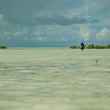
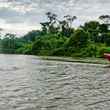

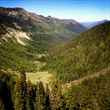



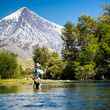
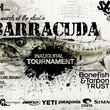



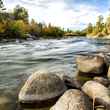
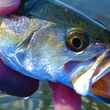



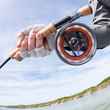
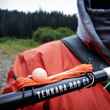




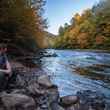

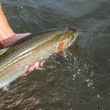
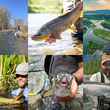
Comments
doug balfour replied on Permalink
What does a week cost?
Michael Dekelver replied on Permalink
...if you have to ask.... it may be north of $10k. Plus you fly to Goose Bay.
Bill fast replied on Permalink
So many thoughts. Fish stories! When you've fished, you recognize the emotions like you were there, too.
Money! This is the aristocrats game.
Sustainability: it was only a few short years ago that Ireland had a healthy Atlantic run; no more. I fear Flowers could vanish in an instant.
Heartache: loss of habitat, loss of fish stocks, extirpation of species, hegemony of stocked fisheries, I feel actual heartache just writing this.
Practicality: I caught a larger morones saxatilis rather than salmo salar on my own fly at night this past October.
Fishlust:
Nevertheless, fishing for and catching a wild Atlantic is never going to stop being a deep desire.
Pages